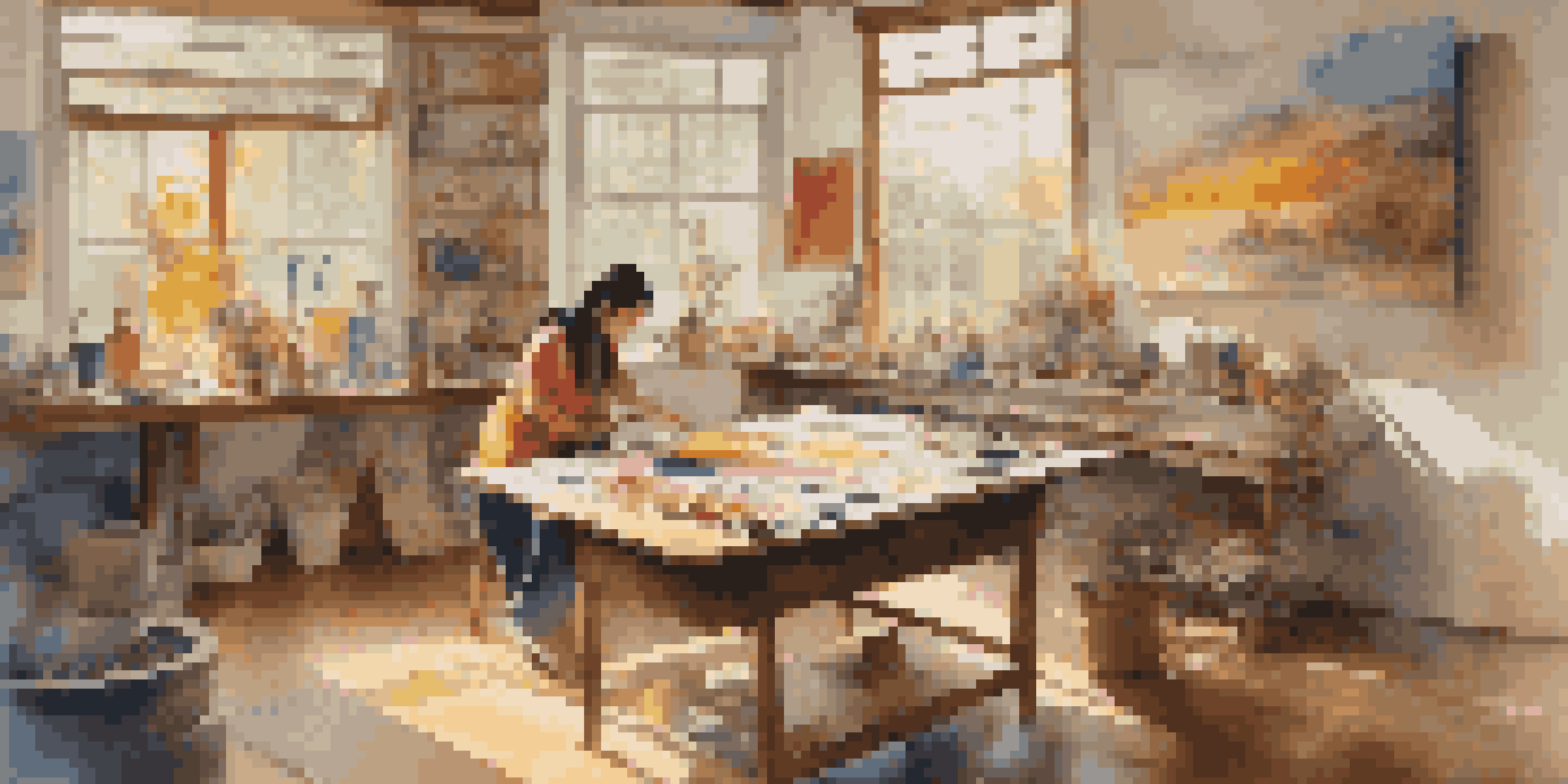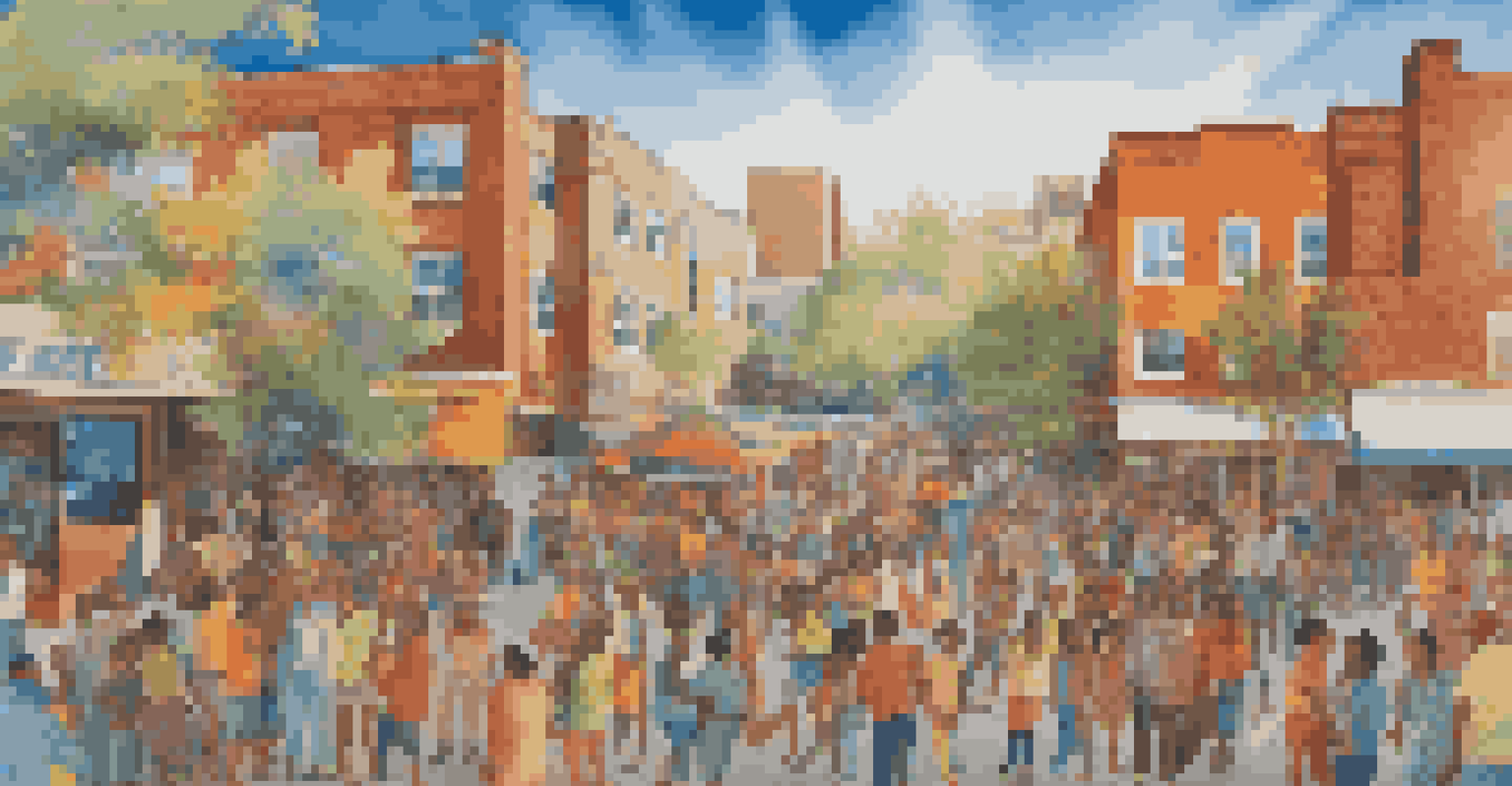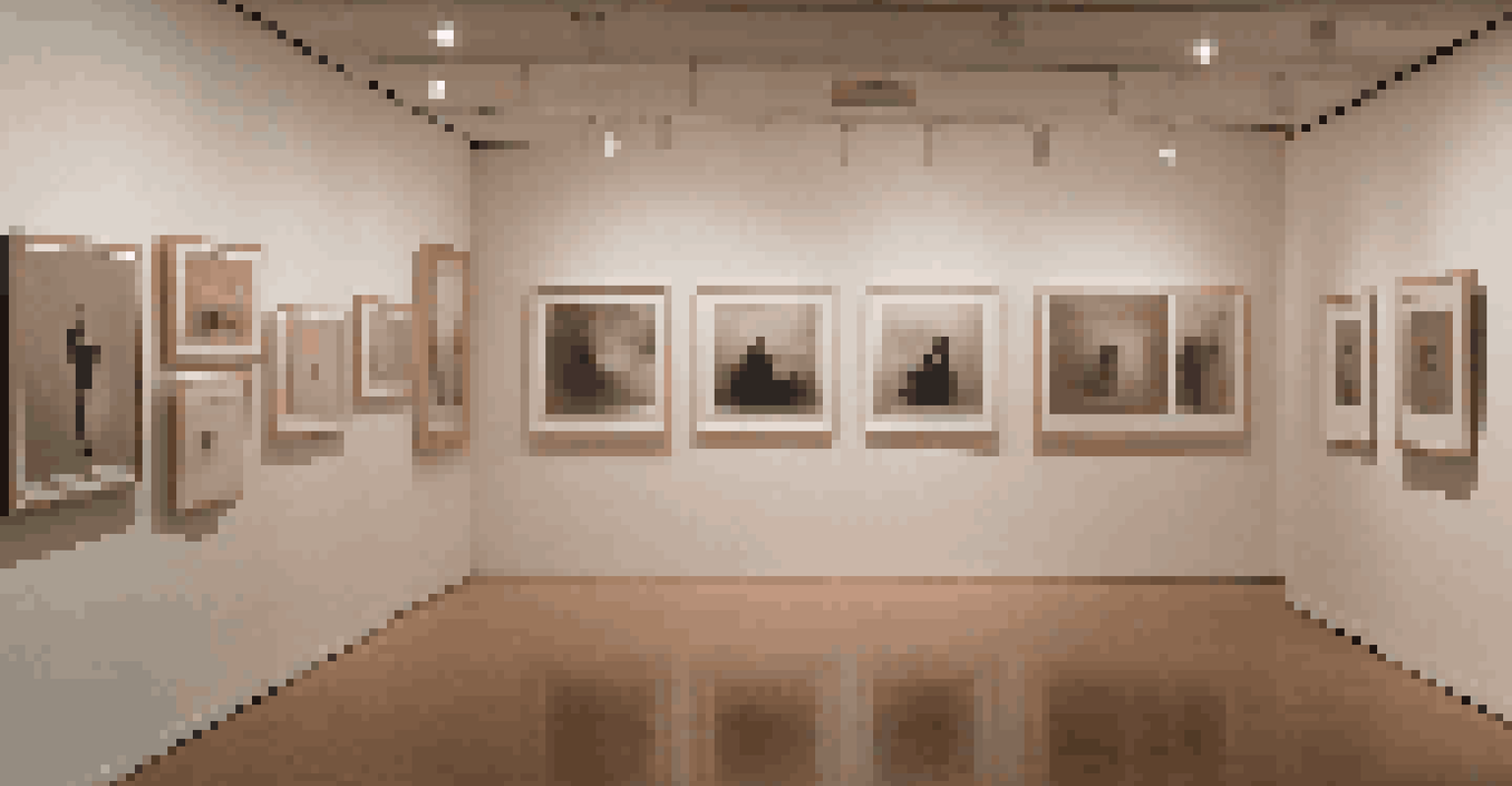Gender and Memory in Art: Personal Narratives and History

Understanding Gender's Role in Artistic Memory
Gender shapes how we perceive and remember experiences in art. Artists often infuse their personal narratives into their work, reflecting their identities and societal roles. This intersection of gender and memory can reveal underlying biases and cultural norms that influence both creation and interpretation.
Art is a way of recognizing oneself, of finding a voice in the world, of reclaiming one’s narrative.
For instance, women artists may highlight personal memories that challenge traditional narratives, offering fresh perspectives on history. Similarly, male artists might explore themes of masculinity and vulnerability, reshaping collective memory through their unique viewpoints. These diverse expressions create a richer understanding of art's impact on societal memory.
Ultimately, recognizing gender's role in memory allows us to appreciate the complexity of artistic expression. It encourages viewers to question whose stories are being told and whose memories are prioritized. By acknowledging these dynamics, we can foster a more inclusive dialogue around history and experience in art.
Personal Narratives as a Lens for Memory in Art
Personal narratives serve as powerful tools for artists to explore memory. By sharing their own stories, artists can evoke emotional responses that resonate with audiences, making abstract ideas more relatable. This connection can foster empathy and understanding, inviting viewers to reflect on their own experiences.

For example, an artist might create a series of paintings based on childhood memories, using colors and forms that evoke nostalgia. The audience, in turn, might find parallels between the artist's experiences and their own, creating a shared emotional space. This interplay between personal narrative and memory transforms art into a collective experience.
Gender Shapes Artistic Memory
Gender influences how artists express and remember experiences, revealing biases and cultural norms.
As artists delve into their personal histories, they not only document their journeys but also challenge dominant narratives. This act of sharing can empower marginalized voices and contribute to a broader understanding of history. Through personal narratives, memory in art becomes a rich tapestry of diverse experiences and perspectives.
The Intersection of Gender, Memory, and Cultural Identity
Cultural identity profoundly influences how gender and memory intersect in art. Artists often draw from their cultural backgrounds to shape their narratives, using art as a medium to express their unique experiences. This interplay can highlight the complexities of identity, particularly in relation to gender roles and expectations.
The act of creating art is a way of expressing one's identity and sharing one’s story with the world.
For instance, an artist from a collectivist culture may portray communal memories that emphasize shared experiences, contrasting with individualistic perspectives often found in Western art. This distinction can reveal how cultural contexts shape our understanding of memory and identity. By showcasing these differences, artists can foster cross-cultural dialogues that enrich our comprehension of memory in art.
Moreover, exploring cultural identity through the lens of gender can challenge stereotypes and promote inclusivity. Artists who embrace their cultural narratives can dismantle preconceived notions about gender roles, encouraging audiences to reconsider their own biases. This transformative process underscores the importance of diverse voices in shaping our collective memory.
Art as a Means of Reclaiming Personal and Collective Memory
Art offers a unique platform for reclaiming both personal and collective memory. Through creative expression, artists can challenge dominant historical narratives that often marginalize certain voices. By reclaiming these memories, artists contribute to a more nuanced understanding of history.
For example, a feminist artist may create a work that addresses women's roles in historical events, bringing attention to their contributions often overlooked in mainstream narratives. This act of reclamation not only honors individual experiences but also redefines collective memory. Art becomes a powerful vehicle for amplifying underrepresented stories.
Personal Narratives Foster Empathy
Artists use personal narratives to evoke emotional connections, transforming individual stories into collective experiences.
Additionally, reclaiming memory through art can foster healing and resilience within communities. By confronting painful histories, artists can create spaces for reflection and dialogue, allowing individuals to process their experiences. This transformative journey highlights the essential role of art in shaping, preserving, and reclaiming memory.
The Role of Memory in Shaping Gendered Artistic Practices
Memory influences artistic practices in ways that often reflect gendered experiences. Artists may consciously or subconsciously draw upon memories that resonate with their gender identity, shaping their creative processes. This relationship can manifest in various forms, from subject matter to technique.
For instance, a male artist might explore themes of masculinity by revisiting memories of childhood experiences with male role models. Conversely, a female artist may use her memories of shared experiences with women to inform her work. These gendered influences create distinct artistic practices that contribute to the overall narrative of memory in art.
Understanding how memory shapes gendered practices allows us to appreciate the diversity of artistic expression. It encourages us to recognize the importance of context in interpreting art, as well as the intricacies of individual experiences. Ultimately, this awareness fosters a deeper appreciation for the ways in which memory intertwines with gender in the art world.
Exploring Historical Contexts of Gender and Memory in Art
Historical contexts play a crucial role in shaping the relationship between gender and memory in art. Artists often respond to the cultural and political climates of their time, using their work to comment on or challenge societal norms. This dynamic interaction can reveal how memory is influenced by historical events and gendered perspectives.
For example, art movements like feminism in the 1970s sought to address gender inequalities, reclaiming women's narratives and experiences. Artists from this era used their work to confront societal expectations, creating lasting impacts on how we view gender and memory in art today. Through these historical lenses, we can better understand the evolution of artistic expression.
Cultural Identity Influences Art
Cultural backgrounds deeply affect how gender and memory intersect in art, challenging stereotypes and promoting inclusivity.
Moreover, examining historical contexts allows us to appreciate the ongoing struggles for gender equality in the art world. By recognizing past injustices, we can foster a more inclusive future for artistic expression. This exploration emphasizes the importance of understanding history to fully grasp the complexities of gender and memory in art.
The Future of Gender and Memory in Artistic Expression
The future of gender and memory in art is promising, as more artists embrace diverse narratives and perspectives. Contemporary artists are increasingly exploring themes of identity, memory, and gender, creating a dynamic dialogue that reflects our evolving society. This shift is essential for fostering inclusivity and challenging traditional norms.
As technology continues to transform the art world, new mediums and platforms are emerging for artists to share their stories. Digital art, social media, and interactive installations allow for innovative expressions of memory and gender. These advancements enable artists to reach wider audiences, amplifying diverse voices that have historically been marginalized.

Ultimately, the future of gender and memory in art is rooted in collaboration and community. By supporting one another and sharing our stories, artists can create a more inclusive and representative art world. This collective effort will ensure that the complexities of gender and memory continue to shape artistic expression for generations to come.